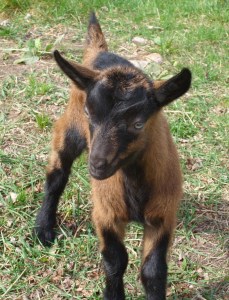 Have you ever bought a sheep, goat, hog or other animal with registration papers? If you did, you probably paid more money for the animal than you would have paid for an animal of the same breed without registration papers. The registration constitutes a form of information about the animal in question— my Shetland sheep papers had a list of the animal’s sire and dam, grandsires, granddams back a few generations. Since the animals status as twin or single, colors and markings, and the presence of horns on ewes, was included in this pedigree, just looking at the animal’s papers gave you an idea of what hereditary traits the animal might carry.
Have you ever bought a sheep, goat, hog or other animal with registration papers? If you did, you probably paid more money for the animal than you would have paid for an animal of the same breed without registration papers. The registration constitutes a form of information about the animal in question— my Shetland sheep papers had a list of the animal’s sire and dam, grandsires, granddams back a few generations. Since the animals status as twin or single, colors and markings, and the presence of horns on ewes, was included in this pedigree, just looking at the animal’s papers gave you an idea of what hereditary traits the animal might carry.
If you have ever purchased livestock that was NOT registered, or NOT purebred, information probably factored into the price. Most sellers of such livestock know the breed(s) that are in the animal’s heritage, and some even have more detailed animal records— with a mature female animal there may be a list of her lambings/kiddings, whether the births were single, twin, or triplets, and so on.
Other backyard livestock breeders do NOT provide that kind of information. I have an immigrant Serbian-American friend who buys sheep, goats and other animals that are purebred, but can’t usually remember the name of the breed of animal involved. He frequently complains that he paid a lot for his original stock, but can’t get much money for the offspring. The difference in price is due to the difference in information— my friend bought from sellers who could at least tell him what breed the animal was, but he himself can’t provide that information about the animals he has bred.
My first goat was a dairy doe from backyard breeders who seem to have bought a different breed of dairy goat buck every year, so that the little doe was a mix of Nubian, Toggenburg and Alpine. Some years after that I bought a registered Boer goat whose sire’s masculine equipment had been pictured in ads in Goat Rancher magazine. In the first place, I put the verbal information I had been given about the doeling in written form, and I continued to put the breed information for all the offspring of that doe goat (her first matings were with a LaMancha buck, thus adding one more dairy breed to the mix.) With the second, the main thing I had to do was keep the Boer buck’s information— in the form of his registration papers— in a safe place.
Whether you have registered stock or backyard crossbreds, information matters in the price you will get for the animals you sell. It’s important, therefore, to have good record keeping and careful storage of any registration papers that may have come along with animals you own. A few moments noting things down can lead to information that will make your animals more valuable. It’s well worth doing.